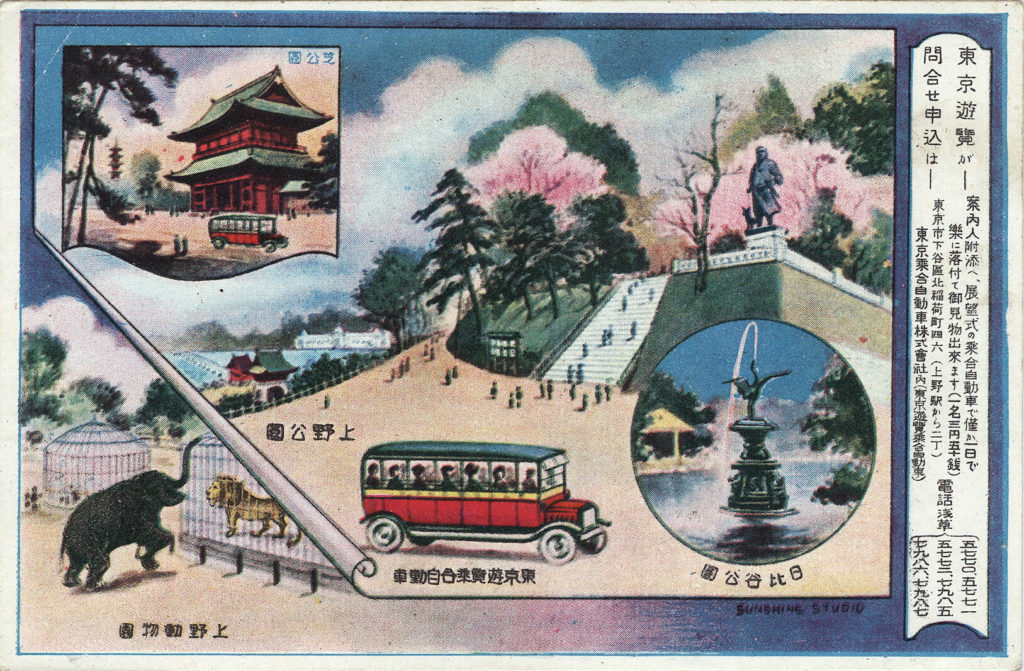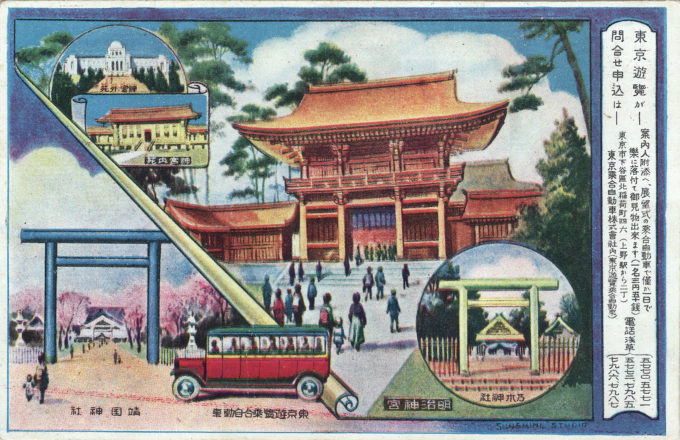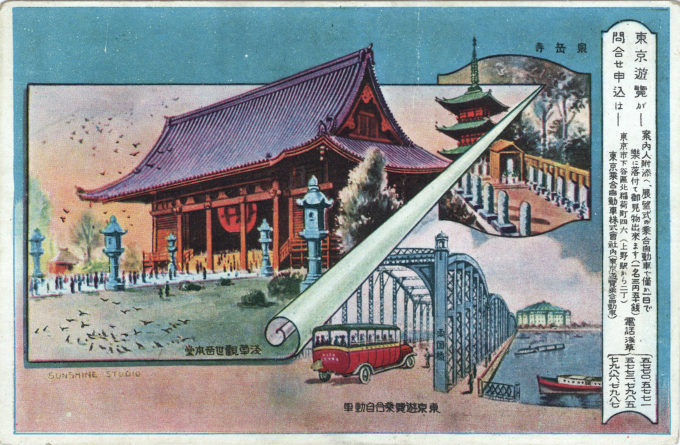
Tokyo Sightseeing Bus Co. advertising postcard, Tokyo, c. 1930. Each postcard in the series is captioned: “A guide will accompany you, and you can easily enjoy the sights in a day. (3.50 yen per person).” Portrayed on this particular postcard, clockwise from upper-left, are: Shiba Park; Ueno Park; Hibiya Park; Ueno Zoo.
See also:
Tokyo Motorbus Co. “Yellow Bus”, c. 1940.
The Autobus in Tokyo, c. 1930.
Nikko Motor Bus Co. tour of Nikko, c. 1940.
Tokyo Sightseeing Bus Co. was founded in 1925 by Watanabe Shigeru, becoming the first regularly-scheduled bus sightseeing operation in Japan. Prior to this, sightseeing by tourists had been carried out using jinrikisha or horse-drawn carriages. Capitalized in part by the Tokyo Motor Manufacturing Works (which had built the first Japanese-made gasoline engine automobile, the ‘Takuri’, in 1907), the sightseeing company began carrying its first fares on December 15, 1925.
Eight-hour-long city tours of Tokyo were offered daily, departing from the Shimbashi and Ueno train stations. Sights along the route included the Miyagi (Imperial Palace), Hibiya Park, Shiba Park, Mt. Atago, Sengakuji Temple, Meiji Shrine, the Crown Prince’s Palace, Yasukuni Shrine, Ueno Park, Asakusa Kannon, a clothes factory site, and Ginza. At each location, passengers disembarked to tour the sight. A midday lunch break was taken in front of Meiji Shrine (a set meal cost an extra 50 sen).
Custom-built bus bodies were attached to imported American Clydesdale motor frames.
Jinrikisha and carriage owners strongly opposed the introduction of bus sightseeing because of the direct competition the modern conveyance offered. Some hotel owners also expressed their displeasure, claiming that guests could reduce the number of nights stayed because of the time saved sightseeing by bus rather than the slower modes of jinrikisha and carriage. More enterprising hotel and ryokan operators began offering their own sightseeing tours via reserved taxis.
Operations were suspended in 1940 because of the growing East Asia conflict.
- Tokyo Sightseeing Bus Co., Tokyo, c. 1930. Clockwise from upper-left: Meiji Memorial Picture Gallery, Shinjuku; National Museum, Ueno Park; Meiji Shrine, Harajuku; Nogi Shrine, Akasaka; Yasukuni Shrine, Kojimachi.
- Tokyo Sightseeing Bus Co., Tokyo, c. 1930. Clockwise from left: Sensoji Temple, Asakusa; Sengakuji Temple; Ryougoku Bridge and Kokugikan (Sumo Hall).



